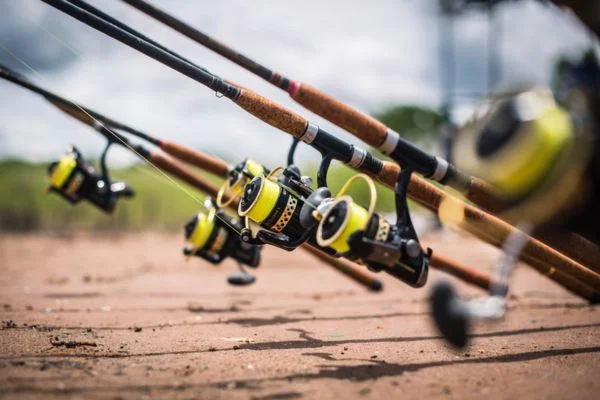For many anglers, choosing the right size fishing rod can be confusing and daunting. After all, various sizes available range from ultra-light rods designed for small trout on rivers to heavy-duty saltwater rods suited for big-game fish. Finding the right size fishing rod will make all the difference in your experience – but how do you choose? In this post, we’ll help you determine the best option for your unique needs and explain the answer to the question of what size fishing rod do I need.
What Size Fishing Rod Do I Need
Deciding what size fishing rod to purchase can be a tricky task. You’ll want the right length and power for your planned fishing adventures. A longer rod is recommended if you plan a long-distance fishing session, as it provides more casting distance. A medium or short rod is suitable for short-distance angling.
The power of your rod helps dictate the size of fish you can catch – a light or ultra-light rod is best for smaller fish, whereas a heavier rod should be considered if you plan on pursuing larger game fish.
Ultimately, the size and strength of the rod you will need depends upon where what, and how often you plan on doing your fishing.
Also Read: How To Set Up A Pole For Trout Fishing?
How to Choose the Right Fishing Rod Size

Selecting the right fishing rod size is essential for a successful experience while on the water. Whether you’re a beginner or an experienced angler, choosing the right fishing rod size can make all the difference in your catch rate. Here are some tips and considerations to keep in mind when selecting the best fishing rod size for your needs.
Size Matters
The most important factor when choosing a fishing rod is its length. Longer rods allow more control over casting and fighting fish but require more space to store and transport.
Shorter rods are great for close-quarters situations, such as boat docks or small streams, but lack power when fighting bigger fish.
Generally speaking, most anglers choose rods within the 6-8 foot range because they provide the perfect balance of power, accuracy, and convenience.
Power Ratings
Manufacturers also assign power ratings to their rods, indicating what type of bait and line weight they’re suited for. Most rods will have one of three main power ratings—ultra light, light, or medium—that correspond with different line weights and lure sizes.
If you’re using ultralight tackle with small magnets (1/16 ounce – 1/4 ounce), you should choose an ultra-light power rod. For line weights between 1/4 ounce – 3/4 ounce, look for a soft power rating; for anything heavier than that (3/4 ounce – 2 ounces), opt for a medium-powered rod instead.
Action Ratings
As well as assigning power ratings to their rods, manufacturers also give action ratings that indicate how quickly a rod will bend when pressure is applied from a hooked fish.
Fast action rods bend near their tip section; moderate action rods bend near their midsection; slow action rods bend down near their handle section; extra immediate action flexes throughout its entire length almost immediately upon contact with pressure from a hooked fish.
Choosing an appropriate action rating comes down to personal preference as well as what type of species you plan on targeting while out on the water.
However if you’re starting, it’s probably best to stick with something in the moderate action range like a medium-fast or fast-medium rated fishing rod until you get used to how it feels in your hand when casting and fighting fish.
Also Read: How To Use A Crimping Tool For Fishing?
What Rod Length Is Best?
Choosing the right rod length can be tricky, as you must consider several factors. Yet, understanding what size best suits your requirements and preferences will likely lead to better fishing experiences! The two key things to consider are casting distance and how that length feels in your hands.
If you want longer casts without much extra effort, you’ll likely want something on the longer side. But if the rod is too long, it could be tiring and awkward to handle.
For example, a shorter rod might be the optimal choice if you have smaller hands and arms. All in all, testing out different lengths and seeing what works best is worth trying before investing money into the wrong one.
Also Read: Can I Take A Fishing Rod On A Plane?
Bottom Line:
Hope now you get the answer to the question of what size fishing rod do I need. Once you understand all of these factors—rod length, power rating, and action rating—it becomes much easier to pick out the perfect-sized fishing rod for your individual needs.
Keep these tips in mind next time you go shopping so that you can select the ideal fit that will help ensure your success while out on the water!

